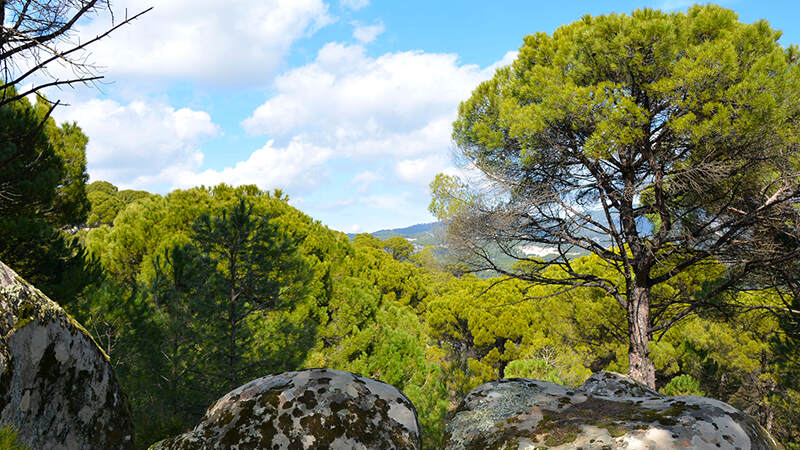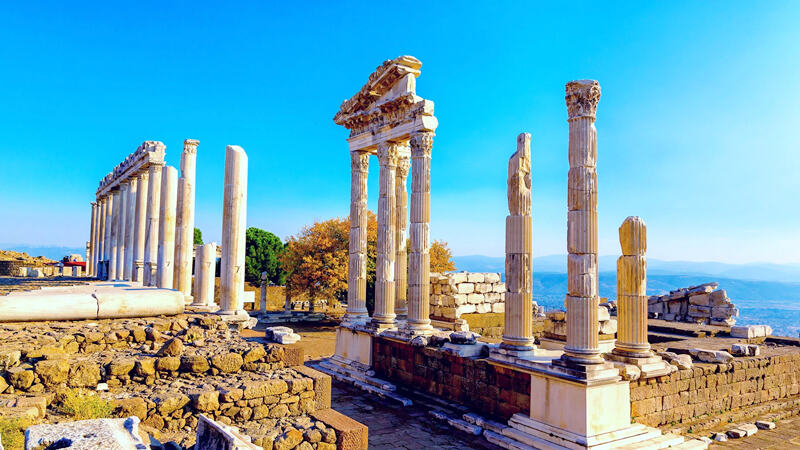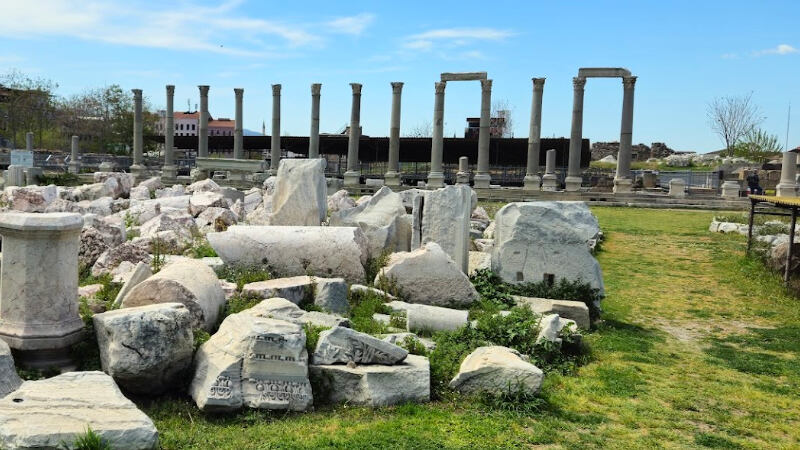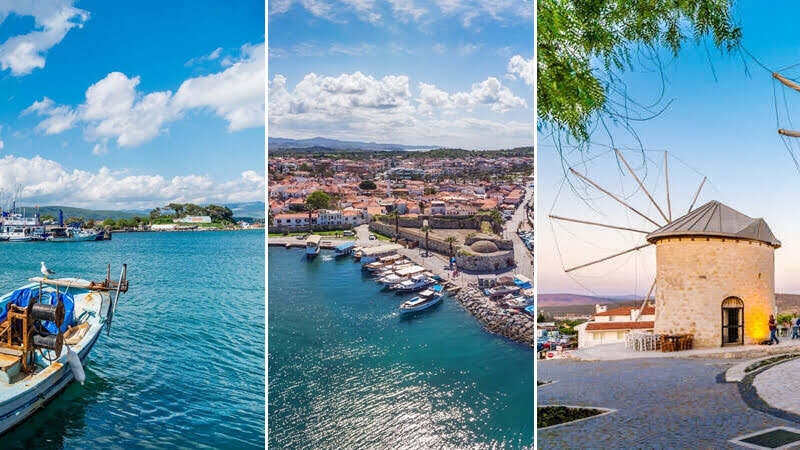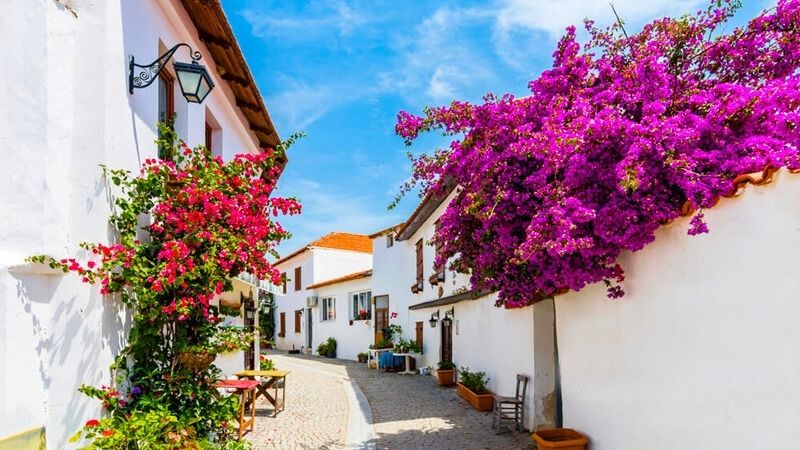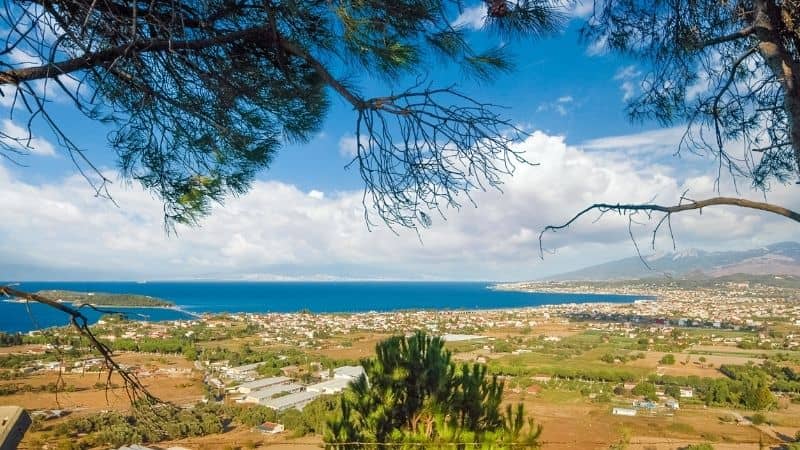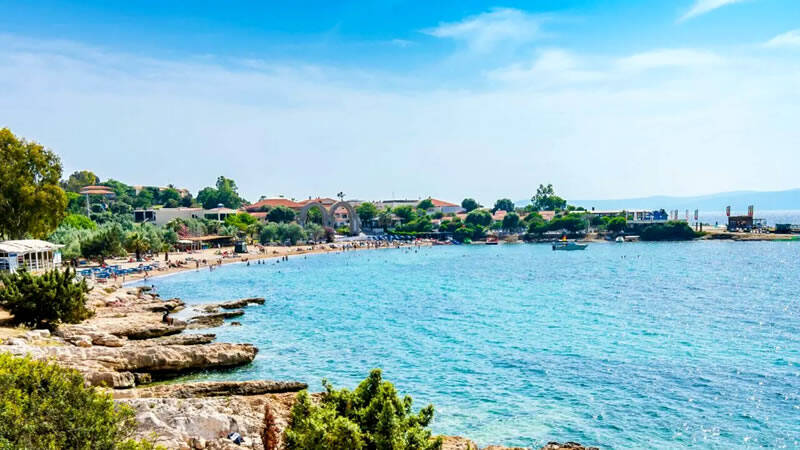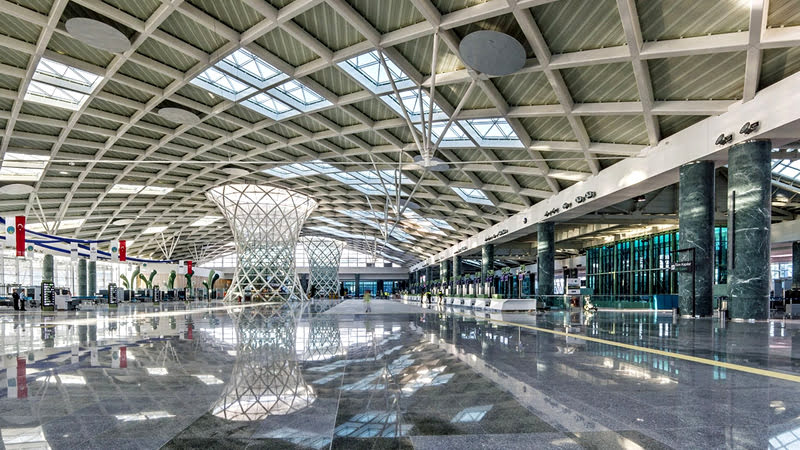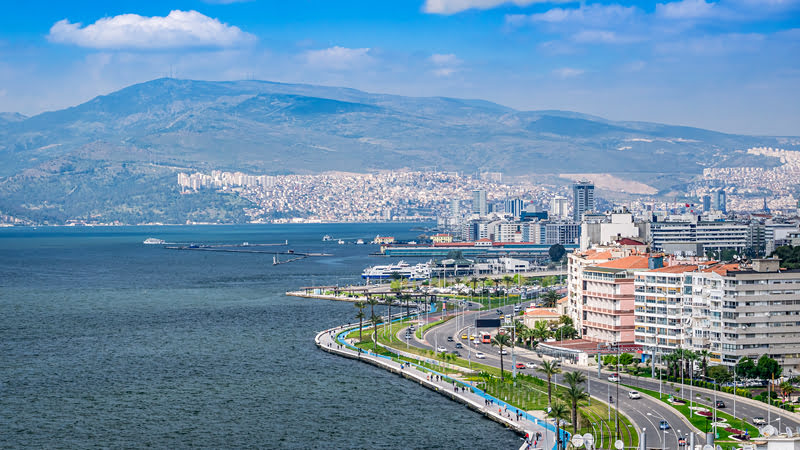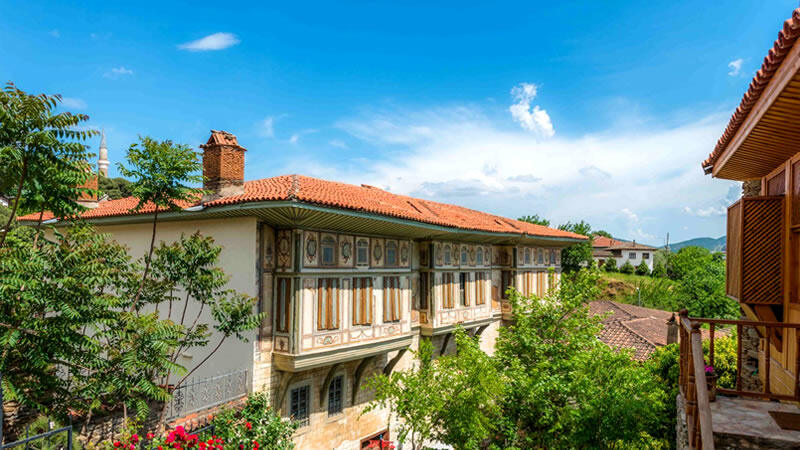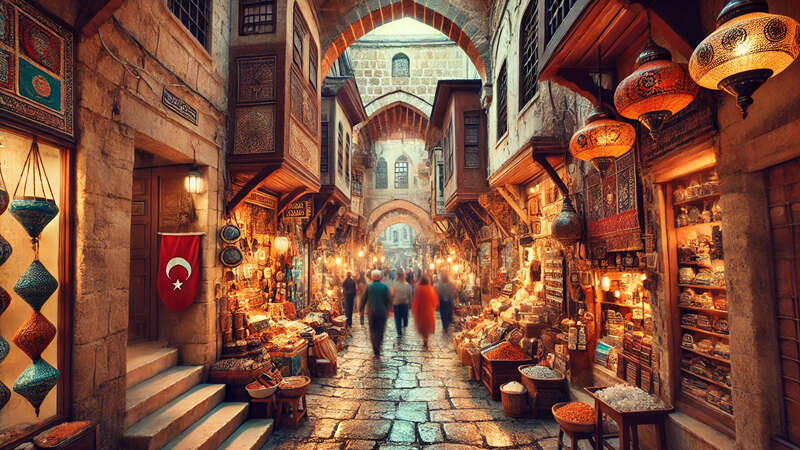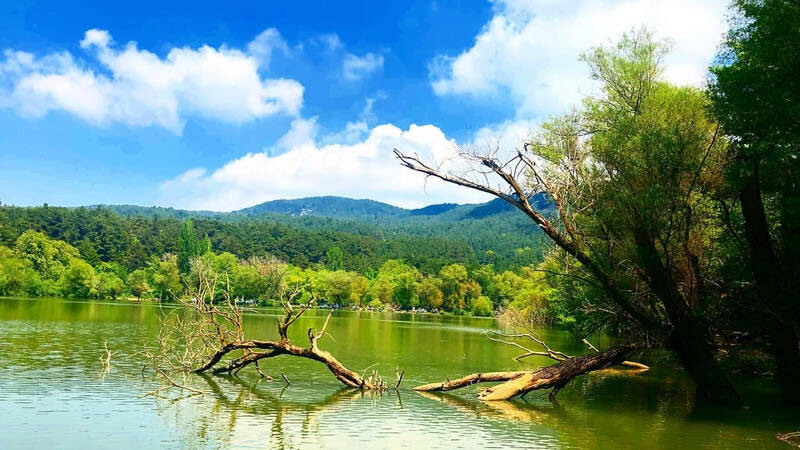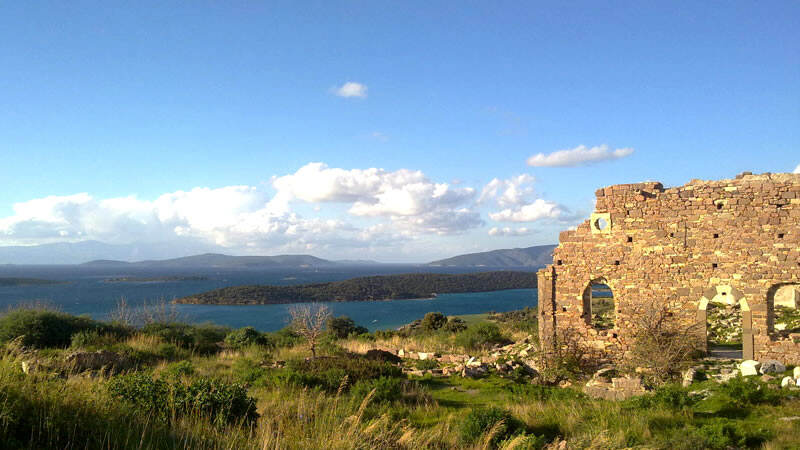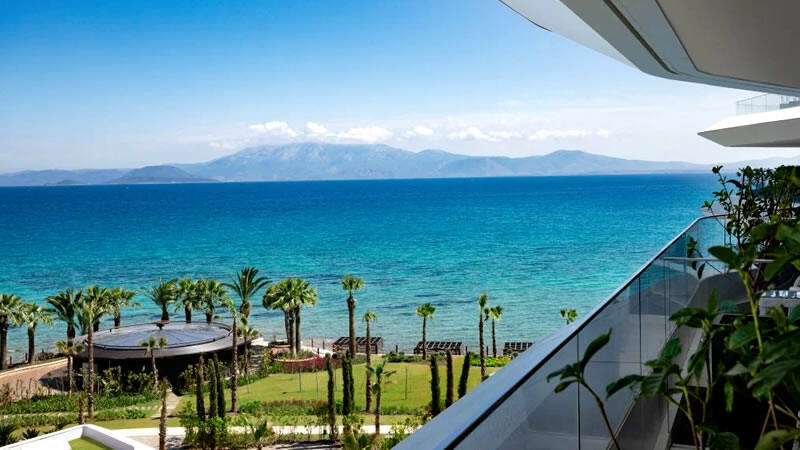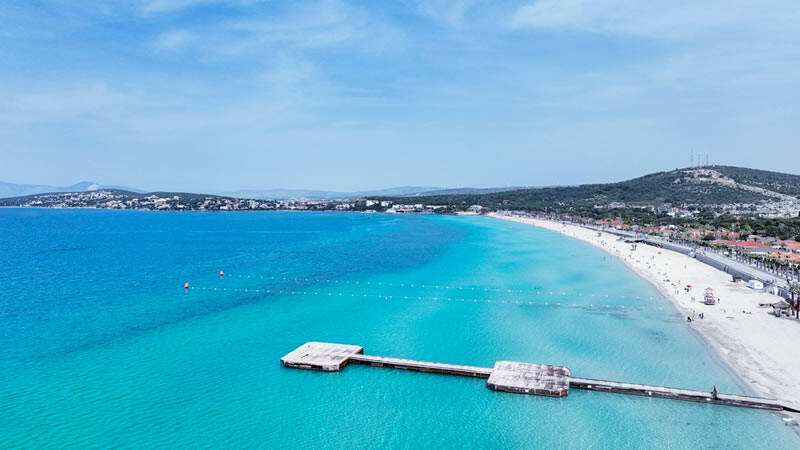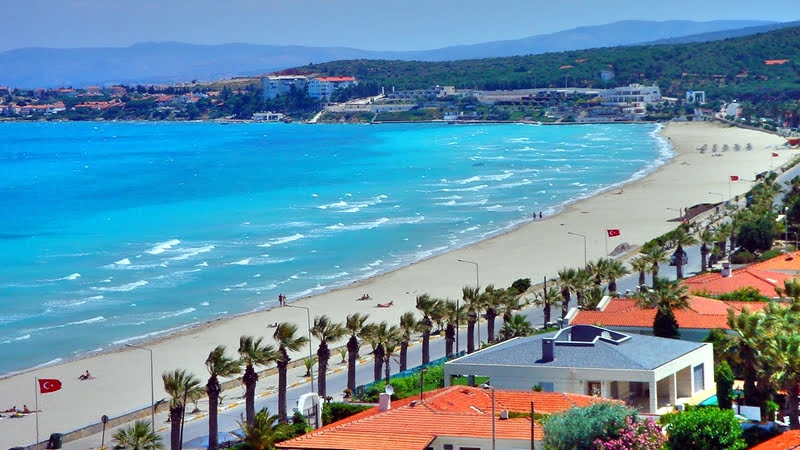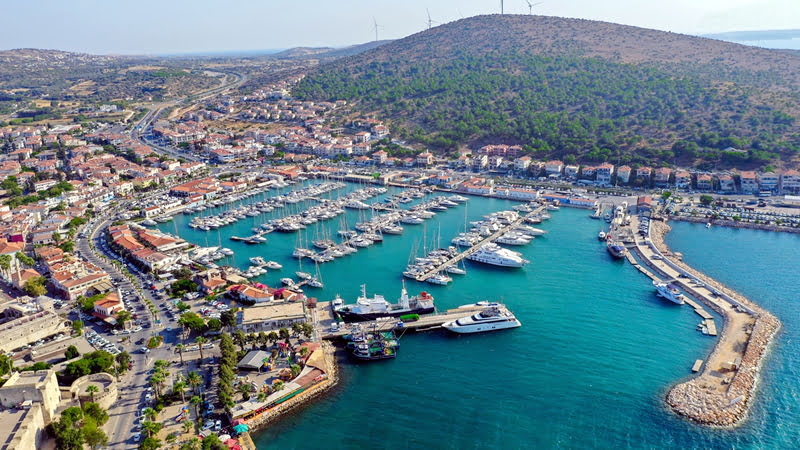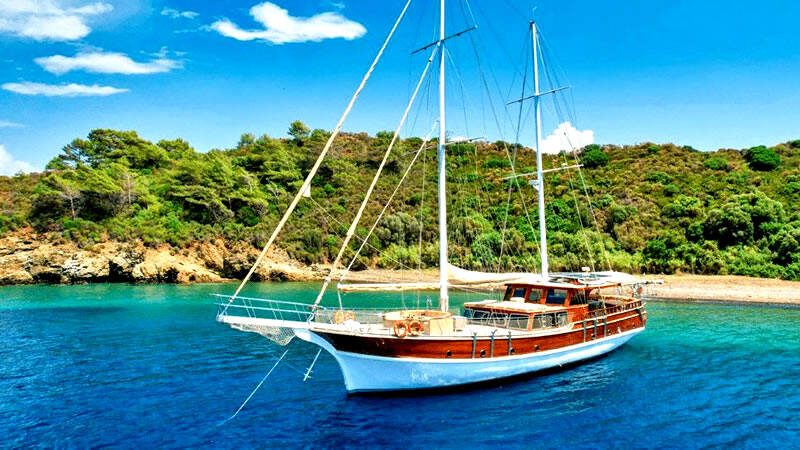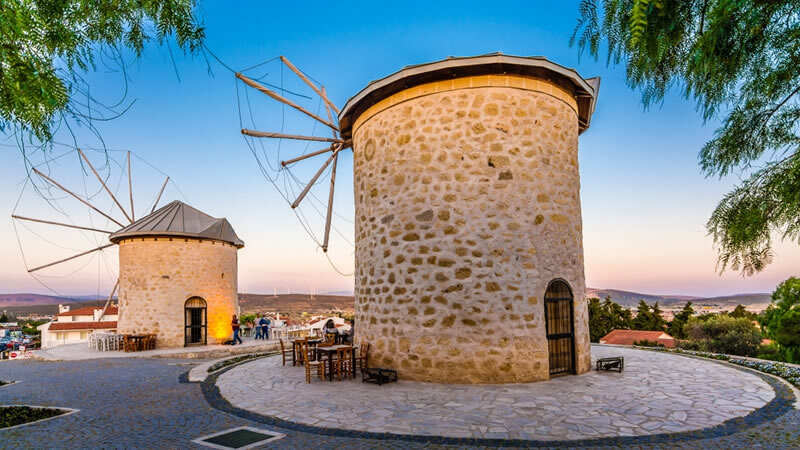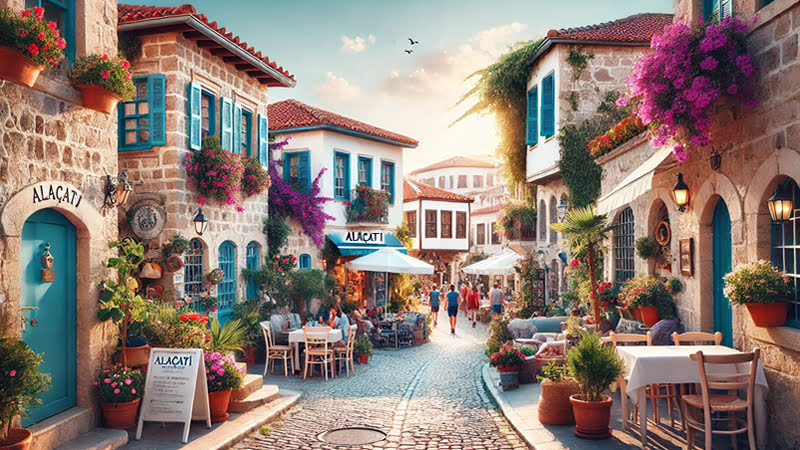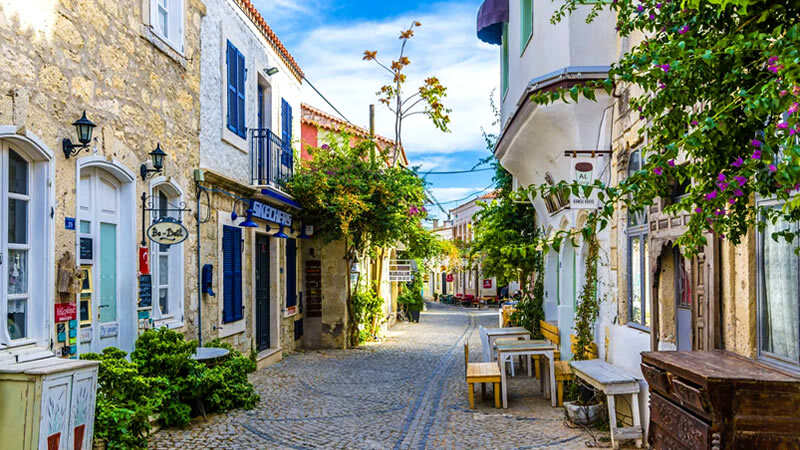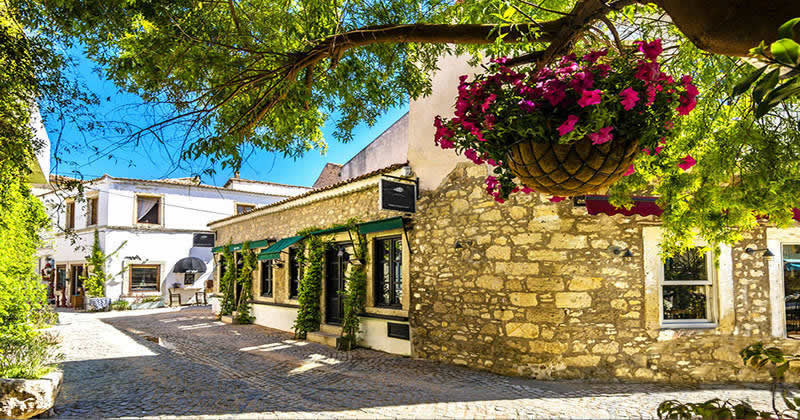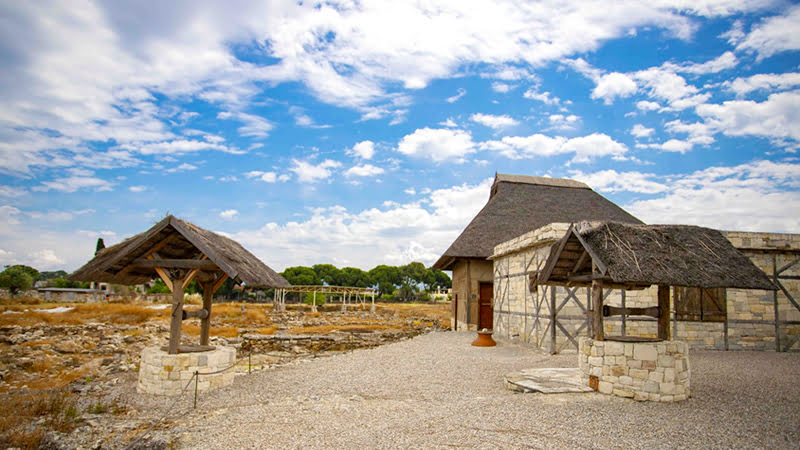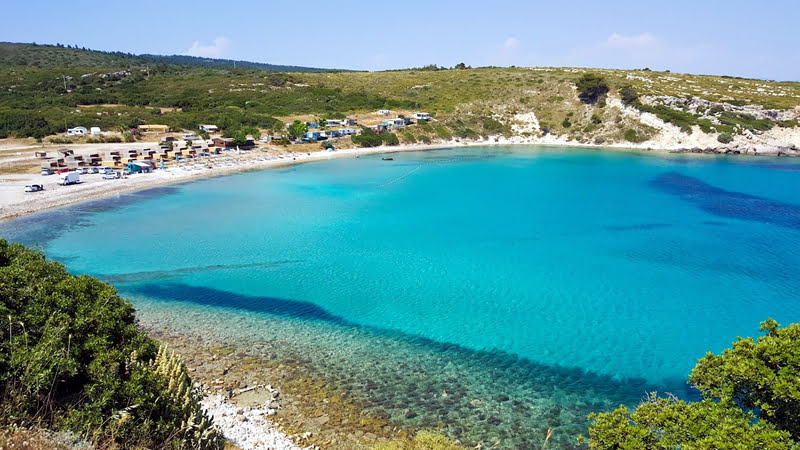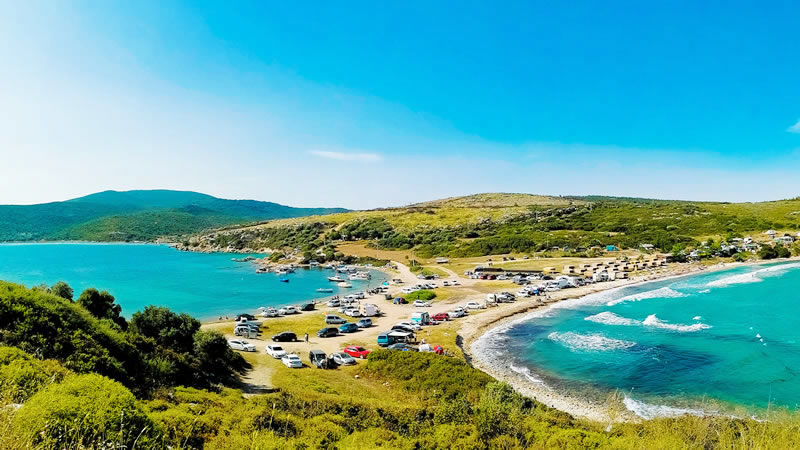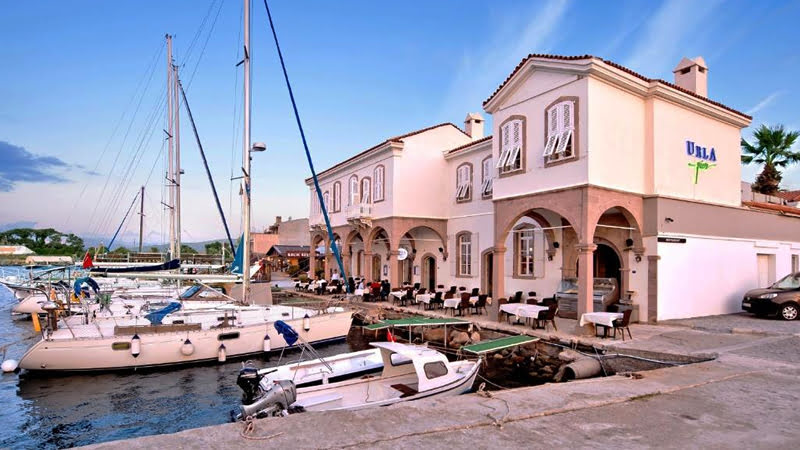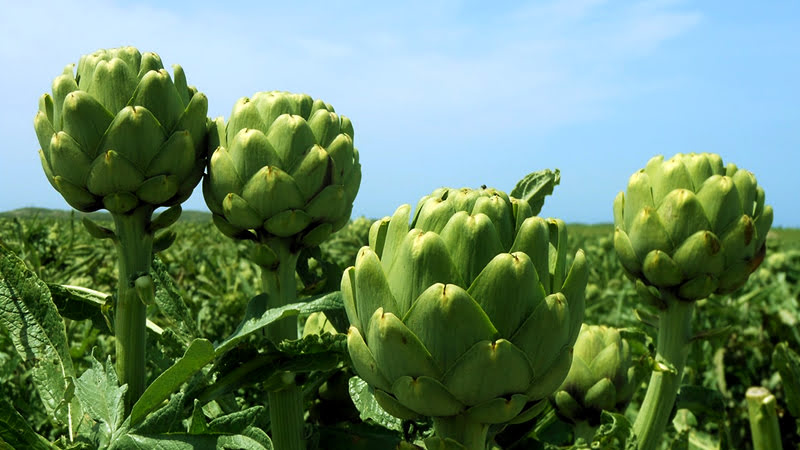Bergama - A City of Health and Healing from Antiquity to the Present
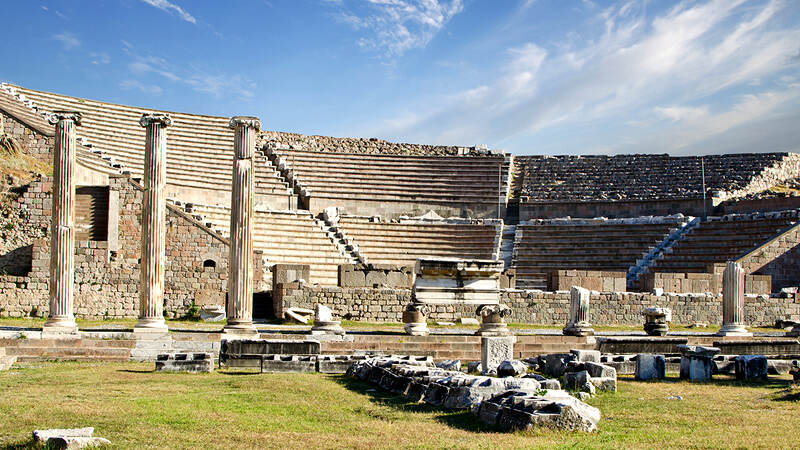
Bergama, located in the İzmir province of Türkiye, is renowned worldwide not only for its cultural and historical heritage but also for its deep-rooted history in the field of health. Known as Pergamon in ancient times, this unique city has earned its reputation as one of the most important health centers in history. Bergama's healing tradition carries the traces of a rich heritage dating back thousands of years. Particularly, ancient health centers such as Asklepion and the works of renowned medical scholars have made Bergama the health hub of the ancient world.
One of the most significant milestones in Bergama's history of health is the Asklepion Health Center. Established in the 4th century BCE, this center was dedicated to the god of health, Asklepios. Asklepion served not only as a place for treating physical ailments but also as a holistic healing center focusing on mental and spiritual health. Patients arriving here were greeted with the inscription "Death cannot enter here" at the temple's entrance, stepping into an atmosphere filled with hope for healing.
The treatment methods applied in Asklepion reveal the advanced state of ancient medicine. Practices such as hydrotherapy, aromatherapy, music therapy, physical exercises, fresh air, and sleep therapy laid the foundation for modern medical practices. Many of these methods adopted a holistic approach to mental and physical health. The temple’s thermal water springs and sacred fountains utilized the purifying and healing power of water. Moreover, it was believed that patients could receive healing from the god Asklepios through dreams, which were interpreted by priests.
Born in Bergama in 129 CE, Galen was inspired to pursue medicine by his father, Aelius Nicon, an architect and mathematician. His interest in various philosophical schools such as Platonism, Aristotelianism, Stoicism, and Epicureanism brought a philosophical depth to his medical approach. Galen began his medical education in Pergamon and continued his studies in major centers such as Smyrna, Corinth, and Alexandria.
Returning to Pergamon in 157 CE, Galen became the chief physician of gladiators, honing his surgical skills during this time. Later, in 162 CE, he moved to Rome, serving as the personal physician to emperors such as Marcus Aurelius, Commodus, and Septimius Severus. In Rome, Galen conducted extensive studies in anatomy, physiology, pharmacology, and neurology, leaving behind nearly 100 works that have survived to this day.
Asklepion stood out not only as a health center but also as a hub of philosophical thought. In antiquity, health was perceived not merely as a physical condition but also as a state of spiritual balance and lifestyle. The treatment process at Asklepion was akin to a journey. Patients began their healing by walking along the temple's sacred path, experiencing both physical and spiritual purification. This approach resembled modern psychotherapy practices, targeting individuals' mental and emotional well-being.
In 2014, Bergama was included in the UNESCO World Heritage List. The inclusion of Asklepion and the Ancient City of Pergamon on this list elevated Bergama's historical and cultural significance to an international level. Visitors flock to Bergama to learn about ancient healing methods, follow in Galen’s footsteps, and immerse themselves in the enchanting atmosphere of Asklepion.
In addition to its historical treasures, Bergama is an important destination for health tourism thanks to its natural thermal springs. The region's hot springs and thermal baths provide ideal options for visitors seeking remedies for rheumatic ailments, skin problems, and musculoskeletal disorders. Here are some of the thermal springs that contribute to Bergama’s health tourism:
Located about 4 kilometers from Bergama's town center on the Izmir road, this spring is one of the region's most well-known thermal sources. Situated at an elevation of 66 meters above sea level, Beauty Spring serves both as a thermal spa and a scenic recreational area. Dating back to the reign of King Eumenes of Bergama, it features a domed structure and two marble pools, offering visitors a blend of historical ambiance and healing.
Situated between Bergama and Kozak Bucagi, this spring was also established during the reign of King Eumenes and is known as "Eskulap Baths." Renowned for centuries, it features domed structures and two marble pools. However, there are no accommodation facilities in the surrounding area.
One of Bergama's most famous thermal sources, Haydar Spring, is located about 5 kilometers from the town center. Known for its beneficial effects on rheumatic diseases and skin conditions, the spring offers both open and closed pools where visitors can relax and rejuvenate in its healing waters. The natural beauty surrounding the spring provides an ideal setting for rest and renewal.
Situated approximately 10 kilometers from Bergama's center in Mahmudiye Village, this spring is known for its mineral-rich water, which is particularly effective for joint pain and skin ailments. The water’s temperature makes it suitable for both bathing and drinking treatments. The serene atmosphere of Mahmudiye Spring, coupled with its natural surroundings, offers visitors a peaceful retreat.
Accommodation and Other Services in Thermal Spring Regions:The areas surrounding Bergama's thermal springs offer a variety of accommodation options. Hotels and guesthouses near Guzellik Spring provide visitors with comfortable lodging while allowing them to benefit from the healing thermal waters. Many thermal areas are also surrounded by picnic and recreational spots, offering visitors the opportunity to relax in a natural setting.
The mineral-rich thermal waters of Bergama contribute to the treatment of various ailments:
Rheumatic diseases: Alleviates muscle and joint pain.
Skin conditions: Shows positive effects on eczema and psoriasis.
Musculoskeletal system: Helps treat muscle spasms and back-neck pain.
Stress and mental relaxation: Provides a calming effect, reducing mental fatigue.
Exploring Bergama's historical and natural beauties becomes even more enjoyable with comfortable transportation options. Bergama car rental services offer visitors the flexibility to easily explore the region’s historical sites and surrounding thermal springs. For those looking to discover ancient landmarks like Asklepion, the Acropolis, and the Red Basilica, car rental provides a convenient and independent travel experience.
For visitors traveling from İzmir or nearby cities, Bergama transfer services offer a seamless and comfortable journey. Professional transfer services ensure a safe and smooth trip, allowing you to step into Bergama’s healing atmosphere without hassle. These services are particularly preferred for direct travel from busy locations like airports to Bergama.
With these transportation alternatives, your time in Bergama will be enriched with freedom and convenience, enabling you to explore the city and its surroundings in depth.
Asklepion: The Health Temple of Antiquity
One of the most significant milestones in Bergama's history of health is the Asklepion Health Center. Established in the 4th century BCE, this center was dedicated to the god of health, Asklepios. Asklepion served not only as a place for treating physical ailments but also as a holistic healing center focusing on mental and spiritual health. Patients arriving here were greeted with the inscription "Death cannot enter here" at the temple's entrance, stepping into an atmosphere filled with hope for healing.
Treatment Methods and Healing Techniques
The treatment methods applied in Asklepion reveal the advanced state of ancient medicine. Practices such as hydrotherapy, aromatherapy, music therapy, physical exercises, fresh air, and sleep therapy laid the foundation for modern medical practices. Many of these methods adopted a holistic approach to mental and physical health. The temple’s thermal water springs and sacred fountains utilized the purifying and healing power of water. Moreover, it was believed that patients could receive healing from the god Asklepios through dreams, which were interpreted by priests.
Galen: A Genius of Ancient Medicine
Born in Bergama in 129 CE, Galen was inspired to pursue medicine by his father, Aelius Nicon, an architect and mathematician. His interest in various philosophical schools such as Platonism, Aristotelianism, Stoicism, and Epicureanism brought a philosophical depth to his medical approach. Galen began his medical education in Pergamon and continued his studies in major centers such as Smyrna, Corinth, and Alexandria.
Returning to Pergamon in 157 CE, Galen became the chief physician of gladiators, honing his surgical skills during this time. Later, in 162 CE, he moved to Rome, serving as the personal physician to emperors such as Marcus Aurelius, Commodus, and Septimius Severus. In Rome, Galen conducted extensive studies in anatomy, physiology, pharmacology, and neurology, leaving behind nearly 100 works that have survived to this day.
The Philosophical Dimension of Asklepion
Asklepion stood out not only as a health center but also as a hub of philosophical thought. In antiquity, health was perceived not merely as a physical condition but also as a state of spiritual balance and lifestyle. The treatment process at Asklepion was akin to a journey. Patients began their healing by walking along the temple's sacred path, experiencing both physical and spiritual purification. This approach resembled modern psychotherapy practices, targeting individuals' mental and emotional well-being.
Bergama’s Place on the UNESCO World Heritage List
In 2014, Bergama was included in the UNESCO World Heritage List. The inclusion of Asklepion and the Ancient City of Pergamon on this list elevated Bergama's historical and cultural significance to an international level. Visitors flock to Bergama to learn about ancient healing methods, follow in Galen’s footsteps, and immerse themselves in the enchanting atmosphere of Asklepion.
Health Tourism: Healing Springs and Thermal Riches
In addition to its historical treasures, Bergama is an important destination for health tourism thanks to its natural thermal springs. The region's hot springs and thermal baths provide ideal options for visitors seeking remedies for rheumatic ailments, skin problems, and musculoskeletal disorders. Here are some of the thermal springs that contribute to Bergama’s health tourism:
Guzellik Spring (Cleopatra Beauty Spring):
Located about 4 kilometers from Bergama's town center on the Izmir road, this spring is one of the region's most well-known thermal sources. Situated at an elevation of 66 meters above sea level, Beauty Spring serves both as a thermal spa and a scenic recreational area. Dating back to the reign of King Eumenes of Bergama, it features a domed structure and two marble pools, offering visitors a blend of historical ambiance and healing.
Geyiklidag Spring:
Situated between Bergama and Kozak Bucagi, this spring was also established during the reign of King Eumenes and is known as "Eskulap Baths." Renowned for centuries, it features domed structures and two marble pools. However, there are no accommodation facilities in the surrounding area.
Haydar Spring:
One of Bergama's most famous thermal sources, Haydar Spring, is located about 5 kilometers from the town center. Known for its beneficial effects on rheumatic diseases and skin conditions, the spring offers both open and closed pools where visitors can relax and rejuvenate in its healing waters. The natural beauty surrounding the spring provides an ideal setting for rest and renewal.
Mahmudiye Spring:
Situated approximately 10 kilometers from Bergama's center in Mahmudiye Village, this spring is known for its mineral-rich water, which is particularly effective for joint pain and skin ailments. The water’s temperature makes it suitable for both bathing and drinking treatments. The serene atmosphere of Mahmudiye Spring, coupled with its natural surroundings, offers visitors a peaceful retreat.
Accommodation and Other Services in Thermal Spring Regions:The areas surrounding Bergama's thermal springs offer a variety of accommodation options. Hotels and guesthouses near Guzellik Spring provide visitors with comfortable lodging while allowing them to benefit from the healing thermal waters. Many thermal areas are also surrounded by picnic and recreational spots, offering visitors the opportunity to relax in a natural setting.
Health Benefits of Bergama’s Thermal Springs
The mineral-rich thermal waters of Bergama contribute to the treatment of various ailments:
Rheumatic diseases: Alleviates muscle and joint pain.
Skin conditions: Shows positive effects on eczema and psoriasis.
Musculoskeletal system: Helps treat muscle spasms and back-neck pain.
Stress and mental relaxation: Provides a calming effect, reducing mental fatigue.
Comfortable Travel with Bergama Car Rental
Exploring Bergama's historical and natural beauties becomes even more enjoyable with comfortable transportation options. Bergama car rental services offer visitors the flexibility to easily explore the region’s historical sites and surrounding thermal springs. For those looking to discover ancient landmarks like Asklepion, the Acropolis, and the Red Basilica, car rental provides a convenient and independent travel experience.
For visitors traveling from İzmir or nearby cities, Bergama transfer services offer a seamless and comfortable journey. Professional transfer services ensure a safe and smooth trip, allowing you to step into Bergama’s healing atmosphere without hassle. These services are particularly preferred for direct travel from busy locations like airports to Bergama.
With these transportation alternatives, your time in Bergama will be enriched with freedom and convenience, enabling you to explore the city and its surroundings in depth.

